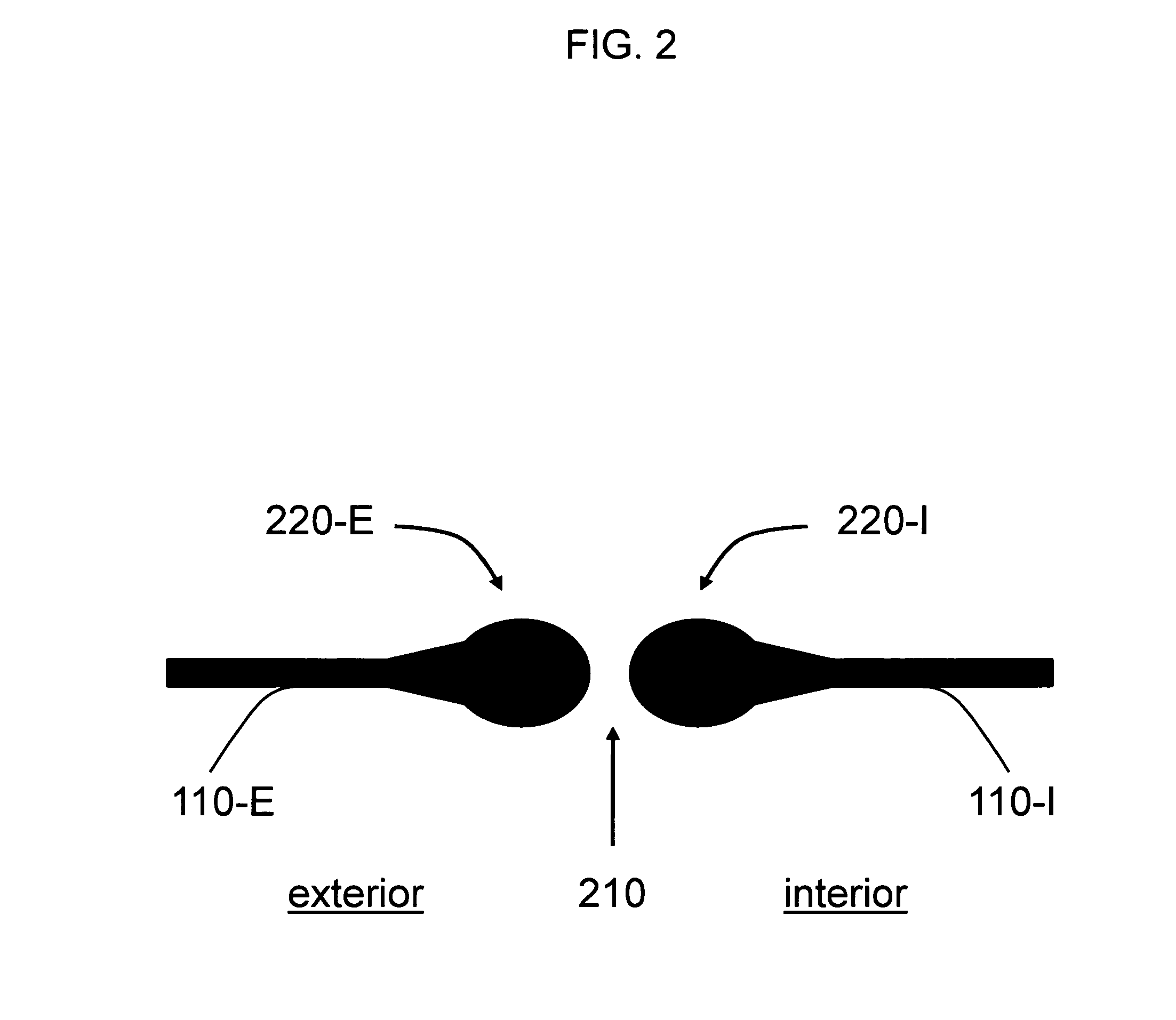Laser-assisted thermal separation of tissue
- Summary
- Abstract
- Description
- Claims
- Application Information
AI Technical Summary
Benefits of technology
Problems solved by technology
Method used
Image
Examples
Embodiment Construction
[0046]FIG. 1 shows a transverse plane view of part of the eye. For the purposes of this invention the lens capsule 110 and the IOL 120 are shown including the iris 140 in dialated position. The anterior lens capsule is transparent and therefore does not readily absorb light. Prior attempts to use a laser to remove tissue or make a capsulorhexis in the lens capsule have utilized (i) photodisruption producing cavitation and / or mechanical shockwave, e.g. the Q-switch Nd:YAG lasers used for posterior capsulotomy, or (ii) plasma induced ablation e.g., the sub-pico second laser for 3-D scanned Capsulorhexis and nucleus fragmentation.
[0047]In this invention, a light absorbing agent 130 is added into or onto a layer of the anterior lens capsule 110. This agent could be a biocompatible agent (e.g. indocyanine green (ICG) or methyl blue), a dye, pigment, a nanoparticle, a carbon particle, or a like. Subsequently, a light beam 150, e.g. a laser, is directed to the anterior lens capsule. The di...
PUM
 Login to View More
Login to View More Abstract
Description
Claims
Application Information
 Login to View More
Login to View More - R&D
- Intellectual Property
- Life Sciences
- Materials
- Tech Scout
- Unparalleled Data Quality
- Higher Quality Content
- 60% Fewer Hallucinations
Browse by: Latest US Patents, China's latest patents, Technical Efficacy Thesaurus, Application Domain, Technology Topic, Popular Technical Reports.
© 2025 PatSnap. All rights reserved.Legal|Privacy policy|Modern Slavery Act Transparency Statement|Sitemap|About US| Contact US: help@patsnap.com



